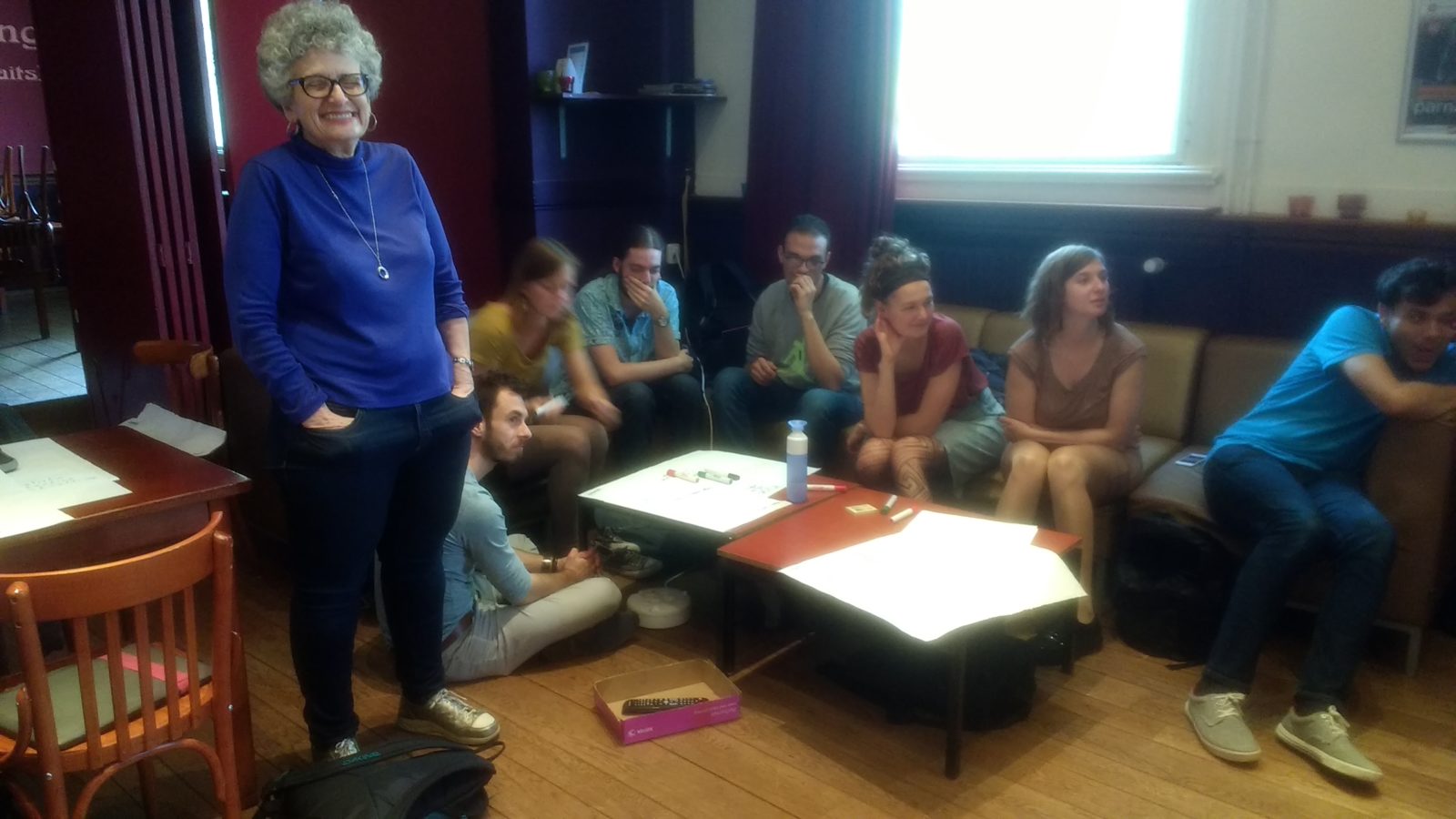News
Report Janet Murray “Making Interactive Narrative”
On the 29th of September, 2017, Co.Laborations supported a masterclass given by prof. Janet Murray, organized by Michiel de Lange and Nanna Verhoeff in cooperation with the Research School for Media Studies (RMeS), and the Netherlands Filmfestival (NFF). Below you can find a detailed report, written by Francine van Beusekom.
Report event “Making Interactive Narrative”
 On September 29, 2017, dr. Michiel de Lange and dr. Nanna Verhoeff organized, with support from Co.Laborations, an RMeS masterclass that revolved around the topic “Making Interactive Narrative” and was given by renowned scholar prof. Janet Murray.
On September 29, 2017, dr. Michiel de Lange and dr. Nanna Verhoeff organized, with support from Co.Laborations, an RMeS masterclass that revolved around the topic “Making Interactive Narrative” and was given by renowned scholar prof. Janet Murray.
Prof. Janet Murray is the Ivan Allen College Professor of Digital Media and the Associate Dean for Research in the Ivan College of Liberal Arts at Georgia Tech. Her work focuses on interactive design, specializing in digital narrative and digital humanities. Murray is the author of Hamlet on the Holodeck: The Future of Narrative in Cyberspace (1997) and, more recently, Inventing the Medium: Principles of Interaction Design as a Cultural Practice (2011).

The event was hosted in Utrecht, at the bar area of the Parnassos Cultural Centre, which created a casual setting. During the masterclass, the students explored practices of interactive storytelling. Beforehand, attendees had to read a book chapter, written by Murray, titled “A Tale of Two Boyfriends”. In this Chapter, Murray proposes the formalist design of a “W2P” narrative structure. The core principle of this structure is the love triangle between one woman and two possible suitors, a classic struggle used by many writers throughout the history of Western storytelling. The “W2P” narrative structure is given shape by four main characters. First and foremost, there’s the protagonist, which Murray labels as the GWEN character. The protagonist is the focal female figure within a story and she, within the narrative structure of a love triangle, has to choose between two men. The first of those is the Boyfriend of ObliGation (BOG). An example of this character is the husband, the person the protagonist should actually be with. But the protagonist also has a second possibility: the Boyfriend of Desire. He can be described as the secret lover, the rescuer, the risky, but very tempting, choice. The last character Murray describes is the foil, who (often) possesses traits that are the opposite of the protagonist’s.

Students, after a short introduction by Murray, were asked to create an interactive story in several steps:
- They firstly had to create a female protagonist. Preferably, the students also thought about her background story to already give shape to a possible narrative structure.
- After creating a protagonist, the students had to think of at least three other characters: the BOG, the BOD, and the foil. Both suitors had to be a real possible choice for the GWEN character; the students were asked to think of several reasons for the protagonist to choose either one of them. The foil was supposed to be the direct opposite of the protagonist, which meant that the character traits of both the foil and the protagonist were also deepened during this step.
- The third task was to come up with interesting events – or moments where the protagonist had to make crucial decisions – which could occur within the story. These events had to trigger specific situations and were meant to be elements within the narrative that pushed the story towards a certain outcome.
- The last step of the process consisted of bringing all the previously thought of elements together. Eventually, the students had to create a definitive storyline. They were also asked to insert the story within the software called Twine: a program that resides around the structure of hyperlinking and interactive platform infrastructures.

In the end, all students presented their eventual storylines and Murray applauded them for their originality. The masterclass proved to be very fruitful and inspiring, which primarily was the result of Murray’s enthusiastic teaching style and the playful storytelling exercises she offered. All this boosted the flow of creativity among the participants, which was Murray’s main goal.

